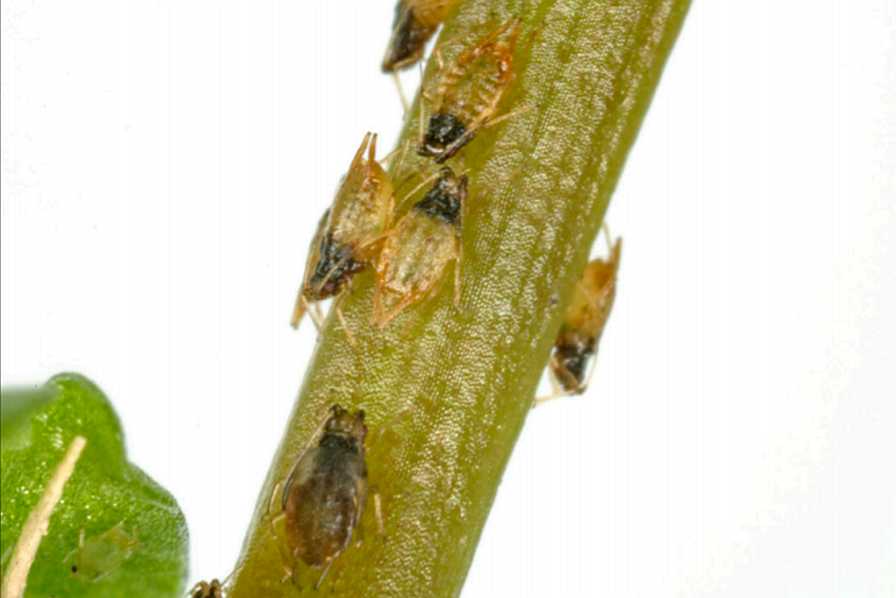Rare Plant Pest Raises its Ugly Head in Florida

The Pilea aphid, which is native to the Far East, has never been reported in the Western Hemisphere — until now.
Photo by Jeff Lotz, FDACS-DPI
According to a recent pest alert from the Florida Department of Agriculture and Consumer Services’ Division of Plant Industry (FDACS-DPI), a member of its team collected a sample of aluminum plant (Pilea cadeirei Gagnep. & Guill.) infested with all life stages of the aphid Myzus fataunae Shinji 1924 (after Takahashi 1965) in Longwood, FL — just outside of Orlando. M. fataunae is native to Japan and Korea. According to FDACS, this represents the first record of the species in the Western Hemisphere.
FDACS-DPI provided the following specs on the invasive pest.
Identification: M. fataunae is a minute aphid (0.9 mm to 1 mm). The adult wingless forms are two-toned with a brown head and thorax and yellow abdomen. Young immature aphids are entirely greenish-white, while older instars develop the bi-coloration. When surveying on the plant, look for small, bi-colored specks.
Hosts: The species was described originally from Fatoua (Moraceae) (Shinji 1924), though subsequent collections have been from members of the Urticaceae: aluminum plant, Pilea cadierei Gagnep. & Guill.; Canadian or Japanese clearweed, P. pumila (hamaoi) (L.) A. Gray; and other ornamental Pilea, Boehmeria, and Parietaria species (Takahashi 1965, Miyazaki 1971, Blackman & Eastop 2018).
Scouting and Management: A hand lens is necessary to survey for M. fataunae. Other aphids may be present on the host and potential host plants, but the target will stand out by its small size and distinct bi-coloration. M. fataunae appears to feed on all aboveground parts of the plant, but favors new growth and petioles.
Cut potentially infested plant parts and place them in a vial of alcohol. Alternatively, separate foliage from roots (to prevent soil particles from obscuring aphids) and beat it against the side of a shallow white tray. Then, tap the plant material over the tray using a pencil. Inspect dislodged debris on the tray using a hand lens and, with a brush, transfer the aphids into alcohol.









